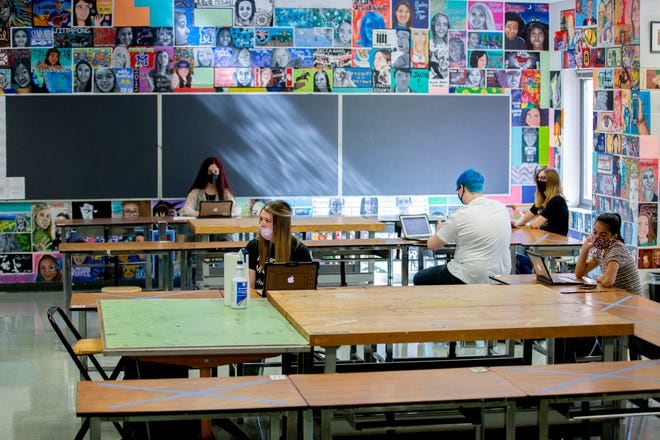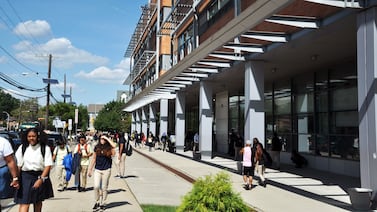About 33,000 fewer students enrolled in Tennessee public schools this year, down nearly 3.5% from last year and mirroring national trends amid the pandemic.
The vast majority of the state’s 147 school systems saw unusually large declines during the first 20 days of the academic year, according to a Chalkbeat analysis of statewide enrollment data. Only 15 districts had more students than last year.
By contrast, Tennessee’s student population grew by about 4% last school year.
Where are this year’s missing students?
Education Commissioner Penny Schwinn believes some families opted to home-school their children. Others likely enrolled their kids in private schools, she said, especially in Memphis and Nashville, where districts started the school year completely online. But the biggest decline was in kindergarten enrollment.
“A number of parents just decided to wait a year and then put their students in kindergarten next year. That’s especially those students who just turned 5 very, very early — the spring babies, so to speak,” Schwinn said Tuesday.
The department did not provide a grade-level breakdown of enrollment numbers or details about enrollment in home schools or private schools. But Schwinn said the state’s webpage with home-schooling information was the third-most visited site at one point this year.
Nationwide, declines in enrollment were expected as American schooling underwent its biggest disruption in a century. Early numbers show that kindergarten classrooms have taken a huge hit. In many districts, one in 10 kindergartners didn’t show up.
That trend continued in Tennessee, where the early statewide numbers were eagerly anticipated. Enrollment during the first 20 days of an academic year is considered an important benchmark in projecting needs and resources for funding and staffing. Districts submit enrollment numbers to the state several times a year and the first report is usually the lowest.
(To see your district’s enrollment, scroll to the bottom to find our searchable, sortable list.)
The state’s total student population was 935,376, based on the early data. All four urban school systems saw significant declines.
Shelby County Schools had 3,800 fewer students than last year — a nearly 4% drop — although enrollment has increased in recent weeks as Memphis students prepare to return to school buildings this January.
Metropolitan Nashville Public Schools lost about 3,800 students, or 5%. Knox County had 2,500 fewer students, a 4% decrease, while Hamilton County lost about 950 students, or 2%. The latter two districts offered both in-person and online learning options.
Even school systems that grow perennially and open new schools annually shrunk in size this year, most notably in counties bordering fast-growing Nashville. Williamson County Schools’ enrollment declined by almost 4%, while districts in both Rutherford and Wilson counties dipped by nearly 3%.
The state’s own school system for struggling schools, the Achievement School District, lost a whopping 15% of its students, accelerating a four-year decline. Nearly all of the state-run district’s students in Memphis and Nashville started the year completely online, though a few schools gave parents the option to send their children into school buildings.
The losses affected rural areas too.
Richard City, a one-school district in southeast Tennessee, saw the state’s largest percentage drop: 27% fewer students.
Superintendent Beth Webb attributed the decline to starting the school year online and on time in early August, while nearby districts pushed their start dates until after Labor Day and offered an in-person option. Richard City’s return last month to in-person instruction lasted only a week.
“I just didn’t have enough faculty and substitutes to keep it going,” Webb said. Some middle and high school teachers contracted COVID-19 and some had to quarantine because a family member got sick, leaving the small school with few options to fill the gaps.
“It’s one headache after another,” she said.
Despite the pandemic, 15 school systems started the school year with more students than last year.
Robertson County Schools, north of Nashville, was the largest district in that category, swelling its enrollment by 13%.
Two small districts in suburban Shelby County also saw increases. Arlington bumped up almost 1%, while Lakeland boosted its numbers by about 2.5%.
Look up how your local district fared in the table below.








